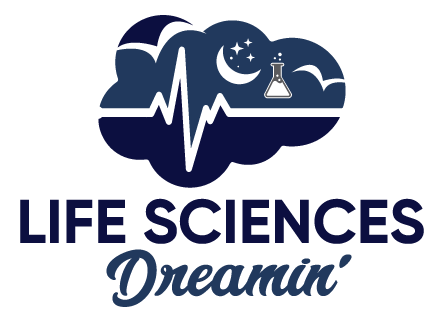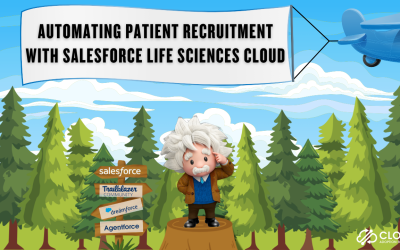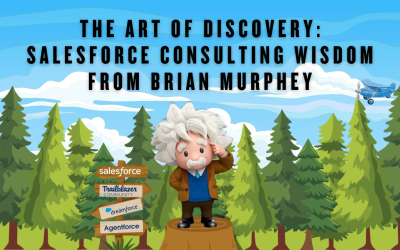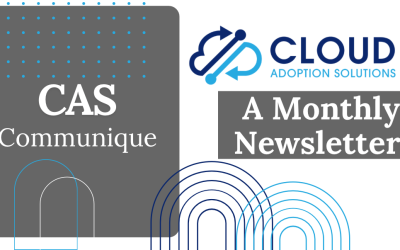Salesforce: Drive Value without Compromising Security – Life Sciences Dreamin’ Webinar
From Resistance to Revenue: How to Use Salesforce + AI to Drive GTM Strategy and Power Growth in the Life Sciences
The Life Sciences Dreamin’ 2023 conference featured incredible speakers and sessions, and we’re happy to bring you Amy Siegel, CEO, S2N Health, as she covers some of her incredible session.
Life Sciences Dreamin’ is an event series for go-to-market leaders at the intersection of Salesforce and the Life Sciences industry. The 2023 series was brought to you by Cloud Adoption Solutions, S-Docs, Elements.Cloud, CapStorm, CustomerTimes, RecipePro, Mindmatrix, EzProtect by Adaptus, Salesforce, Steady State Media, FIDO SEO, and Wise Wolves. Get on the 2024 waiting list by visiting www.lifesciencesdreamin.com.
…and while you’re here: if you’re having Salesforce user adoption challenges, we have a brand new guide that takes you step by step through the principles of teaching adults technology, and drives you to develop a plan for implementation. It’s got room for you to make your own plan – check it out: https://cloudadoption.solutions/teach…
Contact us with your Salesforce challenges at info@cloudadoption.solutions – we love to help!
Cloud Adoption Solutions is a 100% woman-owned registered Salesforce partner, specializing in implementation, integration, and optimization for Technology, Healthcare/ Life Sciences, and Financial Services/ Professional Services organizations in the small and mid-commercial sectors.
VIDEO TRANSCRIPT:
SPEAKERS
Amy Siegel, Liv Porter
Liv Porter
I’m happy to introduce Amy Siegel. Amy, would you be able to give us a little bit of background about yourself and your company?
Amy Siegel
All right, I’d love to do that our company is S2N Health, I started the company. I’m one of the two co founders in 2011. Really with the goal of helping emerging healthcare technology companies with market and business strategy. I have about 25 years in the healthcare industry from a consulting standpoint in house at a medical device company as a VP strategic marketing, and then starting us to and after joining a startup and realizing maybe working for one at a time wasn’t the best use of their, their money or my time. So started us to end really with the goal of helping emerging companies now, in year 12. Not only have we launched a software platform a couple of years ago called rep signal with AI, Customer Intelligence focused on the medtech industry. But we’ve worked with 170 plus companies across medical device diagnostics, drug delivery, and digital health. So we bring that breadth of experience to our software platform rep signal. And it’s been quite a journey. We’re startup all over again.
Liv Porter
Wow, I love that. So you’re not only helping companies in general, but you’ve developed a tool to tackle problems you’re seeing again and again. So working predominantly in med tech, it sounds like can you give us a little overview of what’s going on in that industry and the kind of challenges companies are facing?
Amy Siegel
Sure. So when we started the company in 2011, it was right after the financial crisis for those of us old enough to remember being professional during that time, it was a difficult time for med tech where the funding environment had changed. So had just the general commercial environment, hospitals were also suffering from the financial crisis. So a lot of our initial efforts were around pivoting companies to a better value proposition, a way to be more capital efficient in getting to market so it was a lot of pivots and restarts. And interesting times, I would compare that to now in some ways that post COVID, you know, our customers, customers are hospitals for the most part and health plans. And certainly from a hospital standpoint, in med tech times have been difficult, they all lost a lot of money during COVID, there’s been a lot of consolidation on the customer side, there’s also been a lot of consolidation on the med tech side as their profits have been stretched. So that’s created a need, again, to be super capital efficient in obtaining customers and growth, that were really part of that picture all over again, it’s a bit reminiscent, also, the funding environment on the emerging company side has been challenging, although I feel that in the past couple of months, it’s starting to bounce back. But if you look back to earlier this year, Silicon Valley Bank kind of started the ball rolling, but the funding environment was already getting pretty challenging. valuations have been low companies are conserving cash to get live to fight another day. So it’s another challenging environment. And I think we fit right into helping across the board in this in this environment, just like we did in 2011.
Liv Porter
Wow. It’s not something that you want to see happen. But there’s something exciting for me to know that there are people who weathered a storm and are able to like come alongside another person and like help them through it. So I love that you have the experience to actually sit down and do that with
Amy Siegel
people. variants are aged one of the sometimes with just living long enough, but But yeah, I do think we survived that will survive this. And certainly it’s not as dire as it was back then. Yeah,
Liv Porter
yeah, definitely. So if we that was kind of very high level. And if we were going to actually take a microscope and look at the companies you’re interfacing with consulting with, and that rep signal is solving problems for what does it what does this look like now on the commercial teams you’re serving?
Amy Siegel
Right, so let’s focus on rep signal. Rep signal is it’s our own cloud platform where we provide AI power, customer intelligence to med tech, commercial teams, that’s our initial vertical, we have thoughts on other verticals in the healthcare space and other customers within those. So really, you know how that fits in to the larger picture today is, you know, med tech teams have to be more efficient than ever, you know, it used to be that, for example, one regional manager in a sales force of a medtech company had seven or eight territories now that number might be 1011 15. So they’re really having to bridge across a broader geography, they’re having to be much more focused and their energy and their time. Also, there’s a lot more turnover in teams with consolidation among companies, you know, they are constantly restructuring their sales force teams are having to confront new territories, new customers, a lot of churn. So, you know, they need to really get up the learning curve and be productive faster, and that environment. So, you know, really being able to have the intelligence to do all this efficiently is more important than ever, and we fit right into middle into the middle of that.
Liv Porter
Yeah, I imagine you probably are working with a lot of sales ops or DevOps teams as well in that
Amy Siegel
Yeah, absolutely. In fact, so are offering integrates with Salesforce, that’s how you and I met. At a Salesforce oriented meeting, we made the decision right at the beginning of starting rep signal back in 2021, that we were going to integrate with Salesforce, we weren’t going to try to be a CRM, Salesforce has somewhere between 70 and 80%, market share of CRM in med tech. And as much as some people may resist or become agitated by having to use Salesforce in a way because it’s it’s time they’re not selling, it takes some work to get value out of certainly, you know, they’re not going to give up on Salesforce, it’s become a tool for med tech companies that they’re going to stick with. So, you know, in thinking about how to deliver this customer intelligence to med tech, our one of our very early strategic decisions was we have to integrate with CRM, we have to meet them where they are. And we think we have a value proposition and making CRM more valuable across the whole team and perceived that way. Because now the reps are actually getting a lot of value from going into CRM to help them meet or exceed quota, in addition to providing leadership with the insights they need to successfully manage sales team. So part of that value proposition is also integrating with analytics. So that brings us to sales operations and Reb Ops is being able to not just guide you know the, the reps to the right targets and know how to engage with them, but to have a sense of what the opportunity is, and what how to redeploy those resources, effectively knowing where you are in the market. So certainly, sales ops are among our biggest fans, because we drive value to the team and we drive value to leadership, and we drive value from the CRM as well. Yeah,
Liv Porter
I have sales ops is my background, primarily, I’ve, I’ve done all kinds of things. My My background is mostly being the first person in the role or hiring and just figuring it out. But that’s usually led me to sales ops, because you gotta put the infrastructure together for marketing for sales, and has usually fallen to me. And so I know how bottomless Salesforce can feel. It’s kind of like we’re redoing our kitchen. Right now, we’re doing it all on our own, which we probably shouldn’t have done that. But it’s, I feel sometimes like, it’s like Salesforce, because there’s endless possibilities, which is great, but it’s fraught with endless challenges. And so challenges are a core of this part of the conversation we’re having at the industry level, all the way down to individual teams. And I would love to understand if we go down into the meat of what you’re doing, how does rep signal help.
Amy Siegel
So being from the world of business and market strategy, when we decided to initially develop and launch rep signal, we did our homework, we also had a front row seat at some of the challenges in our industry, because, you know, we were living and breathing beside med tech companies of every stage and size, what we were seeing was a lot of money being spent on data, everyone knows they need data. So what we were seeing was our customers on the consulting side, investing an enormous amount of money in data. And then really not knowing how to make it actionable. So you know, maybe somebody deep in health economics or deep and corporate marketing had access to these high powered databases or sources of procedural data, Physician Data, hospital data, very complicated to use, took a lot of time, and they were actually involving us to some degree in helping them make that data useful. So we thought given that we had already begun developing our own cloud platform that data from, you know, claims data, private and commercial and Medicare, all the way to facility level physician level data, we were starting to aggregate that ourselves and really the founding principle of rep signal was, how do we take all that data, apply our domain knowledge to it to really say what part of that large data elephant is going to be helpful to you commercial team in what you do, which is market and sell your products and solutions? So, you know, that is what’s special about rep signal is the ability to curate that data to really specifically what a company needs to be successful. And then to put that those insights, and I won’t even call it data, it’s really insights to put those insights, right, where people live in the CRM. We also have a standalone platform, we know some companies aren’t ready for a CRM, or some users within a company on a CRM might not be living and breathing in the CRM. So we certainly have a standalone solution as well. And we’ve had customers sort of grow up with us from standalone solution to as they commercialized, you know, moving to Salesforce and integrating Rob signal right in there. And for those customers, we’ve been able to almost pre populate their Salesforce instance with all of this rich data from day one. So the time to value from CRM investment is vastly accelerated in those cases.
Liv Porter
Yeah. And I have insights others don’t. We had lunch last week, and I got to see the tool and it’s beautiful. I’ve used a lot of data sources throughout the years and niche industries and general ones you your resume and pose of the world. And I think this was the most impressive one I’ve seen in terms of its integration and fluidity just getting into this as I can tell right away the time to value is They’re all right. Love it. So closing this out. There was a partner your session at Life Sciences dreamin we talked about the virtuous cycle for driving go to market innovation impact. I found that interesting. I wondered if you could walk us through that?
Amy Siegel
Sure. So the virtuous cycle, I actually have a couple of those I use, I do a lot of coaching and training and teaching at a few universities focused on healthcare innovation. And I always like to think of virtuous and vicious cycles. Because it’s, I think it’s helpful in saying, How do I get started? And what do I do, right, that sort of sets the dominoes going in the right direction, though, in terms of rep signal, you know, really the the foundational piece of the virtuous cycle is what I’ll call ground truth data, and aligning everyone in the organization around that ground truth data. So in the medtech, vertical, if you if you talk to anyone who’s been in the med tech industry a while, you’ll hear that sales and marketing often aren’t very aligned. Marketing is trying to help qualify leads figure out targeting strategies, messaging, sometimes it can be a little bit disconnected or perceived as disconnected from sales who, whose quotas might be misaligned with that strategy, or that strategy isn’t fully implemented in the sales strategy. So, you know, reps, and what we’re finding, especially at the enterprise level, is just that data curation step of what data is really relevant to our commercial team across marketing, and sales really creates that alignment around ground truth data. So that is step number one and thinking about the virtual virtuous cycle, are we all looking at the same source of truth? You know, then that next step is around that curation is around that? How do I take this data and figure out from it, who am I actually targeting? Why are there sub segmentations? That I need to think about? And how does that tie to messaging? So that’s really the how do I make the data actionable? By bringing to light the insights that are really important and saying, who is going to be a great customer for me? And why are they going to purchase? The next step is really the CRM integration, it’s that bringing the data to the people, both on the execution side of sales, marketing, as well as sales, ops, sales leadership, bringing that data against your own sales data, so that you can really look not just at, you know, am I targeting the right customers, obviously, being in the CRM, you can also look at those third party external insights along with your own sales data as part of your targeting strategy. But really measuring your success of your go to market motions and your sales targeting. So having all that data in the ecosystem, right, where your sales data was, enables you to much better track your effectiveness and refine your strategies. So that’s really the third leg of the stool in terms of that virtuous cycle, like, do I have ground truth data? Am I using it in an actionable way to drive my sales and marketing activity? Do I have the data where it needs to live for people to use it effectively and efficiently? And then, can I see that data to track? How effective Am I being? And what can I do to go at it even better the next time so that’s really all part of the virtuous cycle that we are enabling with rep signal.
Liv Porter
I love that. The older I get, the more I realize, like, you just gotta have a framework where things fall apart. Exactly. And what I know that others might not know is not only will there be a data source of truth with with rep signal, but it’s refreshed and accurate, very often, which is a challenge with a lot of data sources. So that’s just something I wanted to plug that I noticed. So yeah, and
Amy Siegel
that was another part of the value proposition is our data is alive, and it’s now alive, you know, in your CRM. So the time and cost of maintaining data of refreshing data is is significant. And we just take that off off of your plate. So you know, that is another big value prop for sure.
Liv Porter
All right, well, this has been a great conversation. I thank you so much for taking some time, and hopefully people will stick around for the next one as well.




